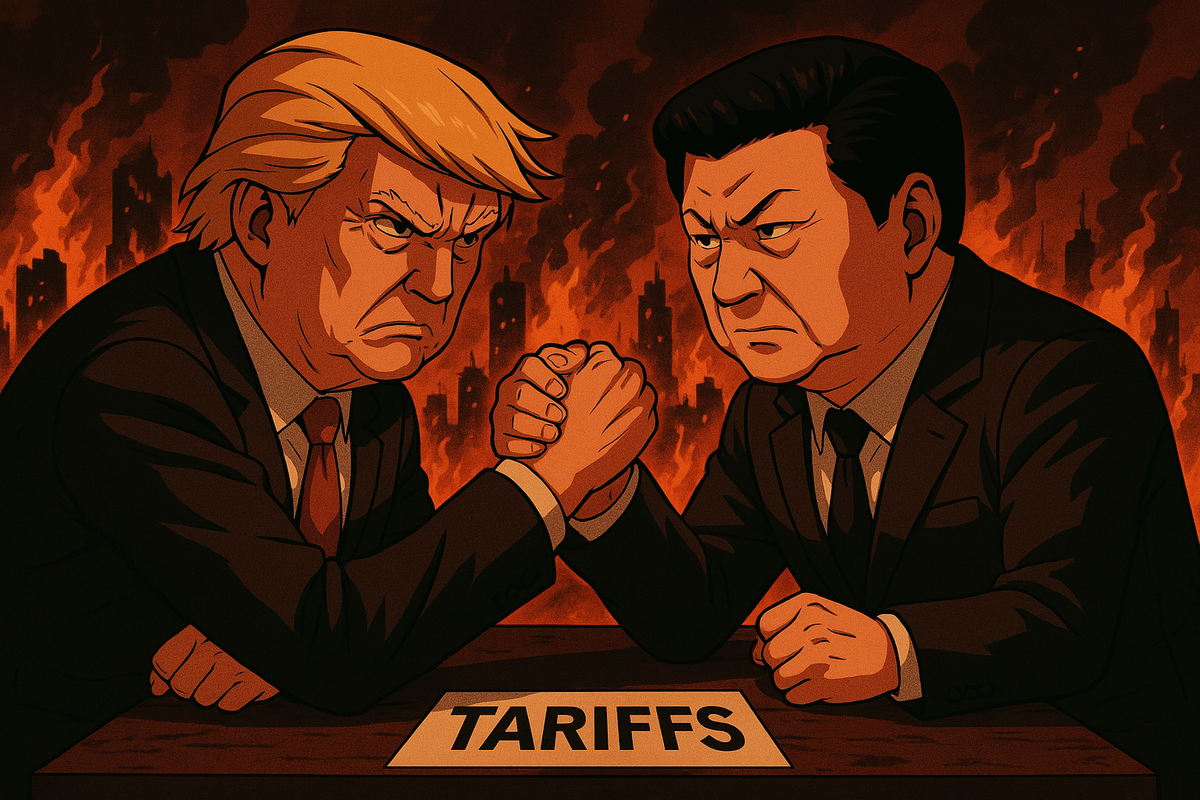Tariff Uncertainty and Bitcoin's New Role
On April 9, 2025, the Bitcoin Magazine podcast featuring Matthew Pines, Zach Shapiro, and Zach Cohen explored aggressive tariff policies and fiscal uncertainties under the Trump administration while noting Bitcoin’s evolving legitimacy as a strategic asset.

- My 'briefing notes' summarize the content of podcast episodes; they do not reflect my own views.
- They contain (1) a summary of podcast content, (2) potential information gaps, and (3) some speculative views on wider Bitcoin implications.
- Pay attention to broadcast dates (I often summarize older episodes)
- Some episodes I summarize may be sponsored: don't trust, verify, if the information you are looking for is to be used for decision-making.
Summary
On April 9, 2025, the Bitcoin Magazine podcast featuring Matthew Pines, Zach Shapiro, and Zach Cohen explored aggressive tariff policies and fiscal uncertainties under the Trump administration while noting Bitcoin’s evolving legitimacy as a strategic asset. The discussion highlighted divergent policy approaches, market volatility, and regulatory challenges tied to stablecoins. These themes have far-reaching implications for trade policy and traditional finance.
Take-Home Messages
- Tariff Policy Divergence: Conflicting tariff strategies are driving market instability and uncertainty.
- Fiscal Impact: Small changes in policy messaging are significantly affecting US Treasury yields and government debt.
- Stablecoin Regulation: Clear guidelines are essential to manage systemic risks while fostering financial innovation.
- Bitcoin Legitimacy: Bitcoin's recognition as a strategic reserve asset signals a transformational shift in asset management.
- Trade Deficit Rebalancing: The pursuit of aggressive tariff policies to reduce trade deficits poses long-term industrial risks.
Overview
The broadcast features Matthew Pines, Zach Shapiro, and Zach Cohen discussing divergent approaches to tariff implementation, contrasting a gradual, calibrated strategy with an aggressive, all-out approach. Their analysis explains how abrupt policy shifts have spurred significant market volatility. The conversation highlights how this volatility is directly impacting Treasury yields and the broader fiscal landscape.
The panel explores the underlying motivations behind the Trump administration’s trade policies. They examine the role of tariffs as both a negotiation tool and a means to address persistent trade deficits. The discussion reflects deep concerns about the feasibility of reshoring manufacturing in a globalized economy.
The panel shifts focus to the emerging legitimacy of Bitcoin, describing its transition from a speculative asset to a recognized strategic reserve. Shapiro emphasizes that high-profile endorsements and ongoing policy debates are accelerating this shift. Their insights suggest that Bitcoin’s evolving role may reshape long-term investment strategies across traditional markets.
A significant portion of the dialogue is dedicated to the regulatory challenges posed by stablecoins. Cohen and his co-panelists discuss how regulatory clarity in this sector is critical for sustaining the US dollar network and managing systemic risks. They conclude that the interplay between trade policy and fiscal management will continue to affect economic stability.
Stakeholder Perspectives
- Policymakers: Seek to balance conflicting tariff approaches and manage fiscal implications while pursuing broader economic objectives.
- Financial Institutions: Focus on mitigating market volatility and managing risks related to Treasury yield fluctuations.
- Industry Leaders: Prioritize strategies that support domestic manufacturing and address trade deficits without causing disruption.
- Bitcoin Investors: Monitor Bitcoin’s transition as it gains legitimacy as a strategic reserve asset amidst evolving policies.
- Regulators: Aim to establish stablecoin frameworks that encourage innovation while preventing systemic risks.
Implications and Future Outlook
Policy shifts will likely prompt a recalibration of trade strategies, with a potential move toward more measured tariff implementations. The internal debates and market reactions indicate that achieving predictable policy outcomes remains challenging. This evolving policy landscape demands close monitoring as decision-makers seek to align strategic goals with economic stability.
The convergence of fiscal uncertainty and volatile market responses poses considerable risks for government debt management. As Treasury yields react sharply to policy cues, fiscal management strategies must adapt to minimize adverse impacts. Effective risk modeling and prudent market interventions will be key to preserving fiscal health.
Bitcoin’s emerging role as a strategic asset could reshape long-term investment dynamics as policymakers refine their economic frameworks. Regulatory clarity around stablecoins and recognition of Bitcoin’s potential may drive institutional adoption. This transformation presents opportunities to integrate innovative financial instruments into traditional markets, albeit with inherent risks.
Some Key Information Gaps
- How can policymakers reconcile the divergent tariff implementation approaches observed in the discussion? This question is vital as it addresses core policy conflicts affecting market stability and geopolitical reordering.
- How can market volatility driven by policy uncertainty be mitigated during rapid tariff shifts? Addressing this will help maintain investor confidence and ensure fiscal stability.
- What quantitative models can forecast the fiscal impact of minor shifts in long-term Treasury yields? Accurate forecasting is essential for balancing fiscal strategies and market dynamics.
- What regulatory frameworks are most effective in balancing innovation in stablecoins with systemic risk management? Clear guidelines will encourage financial innovation while safeguarding the economic system.
- How will the emerging legitimacy of Bitcoin as a strategic asset alter long-term investment strategies in traditional financial markets? Understanding this transformation is crucial for anticipating shifts in asset allocation and risk profiles.
Broader Implications for Bitcoin
Bitcoin as a Global Strategic Reserve
Bitcoin’s potential integration as a global strategic reserve asset could redefine how nations manage their foreign exchange reserves. By offering a decentralized, inflation-resistant store of value, Bitcoin may serve as an anchor in periods of fiscal turbulence. This broader adoption would challenge the conventional reliance on fiat currencies, prompting a reevaluation of global reserve management practices.
Monetary Policy Innovations Driven by Digital Assets
The evolution of stablecoin regulation and Bitcoin’s growing legitimacy may spur central banks to explore digital hybrid models in monetary policy. As policy makers innovate to accommodate both traditional fiat mechanisms and digital assets, new instruments could emerge that enhance liquidity management and exchange rate stability. Such innovations would not only modernize fiscal tools but also promote a more resilient financial system that integrates emerging digital technologies.
Shifting Dynamics in Global Economic Power
If Bitcoin gains traction as a credible reserve asset, its adoption could contribute to a shift in global economic power structures. Traditional financial centers might experience reduced dominance as decentralized finance and digital asset frameworks influence capital flows and investment strategies. This transition could encourage a multipolar financial landscape, where economic influence is distributed among a broader array of innovative financial networks.



Comments ()